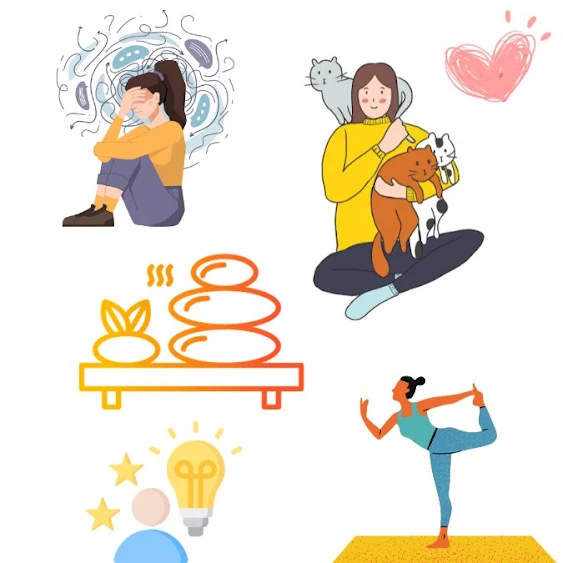We know that caring for a domestic cat can help alleviate depression. We know that it can help alleviate the feeling of loneliness and it can help people get through life particularly when they live alone. There are real, tangible benefits to living with a domestic cat and/or domestic dog companion but sometimes depression just sticks around. A cat owner cannot shake it off and if that's the case, which would be entirely understandable particularly in a more stressful world, this NHS endorsed headset might assist as well.
 |
| Flow headset superimposed on a model presenting depressive behaviour. |
The Times newspaper, yesterday, refers to this device as a way to alleviate the emotional distress a person suffers when they break up with a partner. The headline for The Times was "£400 headset could help to fix pain of a broken heart".
But the pain of a broken heart includes depression, low mood and extreme sadness sometimes. So this device is designed to alleviate a low mood and it purportedly achieves this through very low level electrical signals sent through the brain with electrodes. That sounds a little bit shocking (excuse the pun) or it might to some people but as I said it endorsed by the NHS and its got some good reviews so I would like to mention it on this website.
The problem is this: a person who is sick or depressed cannot in all fairness and truth be a good cat caregiver. You got to be up to the business of cat caregiving to do a good job. It requires human input which makes this post relevant to the website.
The report is that "wearing the device for a few minutes a day with a mild electrical current may reduce feelings of misery, negativity and depression".
36 participants took part in a study. They wore the "transcranial direct current stimulation device".
The participants were split into three groups each wearing the headset for 20 minutes twice a day over five days.
In one group the current was aimed at the dorsolateral prefrontal cortex, an area of the brain linked with task switching, inhibition, planning and working memory.
In a second group, the stimulation was directed at the ventrolateral prefrontal cortex which helps people make conscious decisions according to their motivations. And in the third group the headset was switched off.
Sometimes the gentle electrical current can cause tingling.
The study is published in the Journal of Psychiatric Research. The researchers concluded that the dorsolateral prefrontal cortex stimulation was more efficient than the ventrolateral prefrontal cortex stimulation to deal with "love trauma syndrome". This includes distress, anxiety, insomnia, mood swings and obsessive thoughts.
The researchers were from Iran and Germany. They found that the device "significantly reduced LTS symptoms and improved depressive state and anxiety after the intervention, as compared with the sham group."
A month after the treatment stopped the participants said that they still felt better. The author of the study said: "These promising results require replication in longer trials."
In January of this year, and NHS trust said that it was offering a headset to deliver transcranial direct current stimulation treatment for patients with a diagnosis of depression. Northamptonshire Healthcare NHS Foundation Trust said that their patients use the Flow headset device themselves at home for 30 minutes five times a week for three weeks. After about three weeks they reduce the level of the treatment. They can then stop or continue to use it for as long as needed. It is designed to relieve depressive symptoms.
It's not cheap at about £400 in the UK. But if you are depressed and have tried a lot of things including drugs you might like to consider this as an alternative. I am not a doctor. I'm simply reporting what I read in the newspapers but I want to help people who are depressed and cat caregivers.
 |
| Flow headset in operation. |
---------




